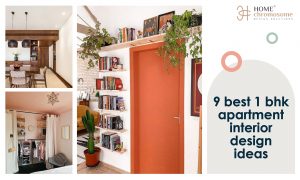The Japandi style has become increasingly famous in recent years, and it doesn’t look like its success will go down anytime soon. Japandi-style interior design is the technique of blending beauty and functionality in a way that works well together. This can help make a calm and relaxing home, which is what we all want. But what does “Japandi” mean, and how can you be sure you’re using it correctly? In this blog, we will discuss the Japandi style and give the best tips for pulling off this trend that will always be in style.

What is Japandi Style interior design?
Japandi style is a style that combines Japanese and Scandinavian design, as the name suggests. It is inspired by the old Japanese idea of wabi-sabi, a way of life that values living slowly, being happy, and keeping things simple. It is also inspired by the Scandinavian practice of hygiene, which is all about warmth, coziness, and health. You can find both of these ideas in Japan today.
Japandi style combines the clean, simple shapes of modern Scandinavian design with the elegant simplicity and practicality of Japanese style. It doesn’t have a lot of stuff in it, but it’s still warm and welcoming. Neutral colors, different textures, and natural materials are used a lot. Here are a few of our best suggestions for how to do it right.
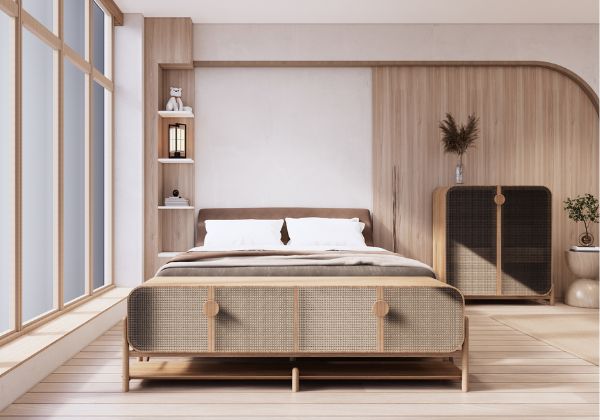
Japandi Style Ideas
Japandi Style Idea #1 – Keep it natural
When picking out your scheme, choose colors that are soft and basic. Think of colors like sand, milk, brown, oatmeal, stone, gray, and oats. Don’t wear anything very bright or white. Nothing should be too loud, too harsh, or take over the talk. You want to create a place where everyone gets along and has peace and harmony. If you think these colors are too dull, you could add a color that goes against them. Use softer Scandi colors, such as pale pink, blue, green, or gray. Use a darker accent color like black or charcoal gray to give the room a richer look. Using airy, light-colored natural fibers and eco-friendly materials is crucial to the Japandi style. Rattan, bamboo, cotton, hemp, and paper are all good examples of these. You could add some friendly metals to the mix to make it look more attractive.
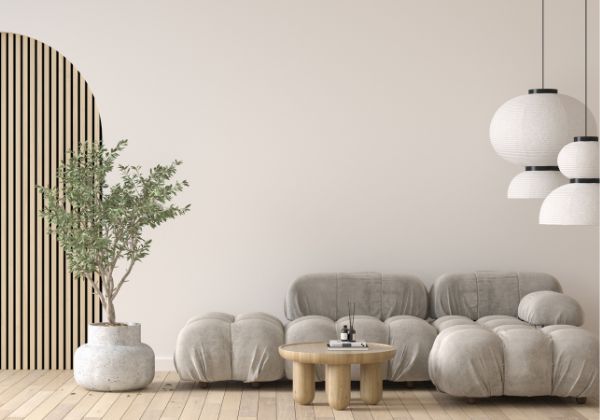
Japandi Style Idea #2 – Minimal accessories
Cut down on the number of things you wear. The Japanese style is all about how simple things are. Less is more. Spend your money on a few beautiful pieces you love that will last a long time. Carefully picked mirrors, picture frames, artwork, wall hangings, table lamps, flowers, and carpets can change the mood of a room and make it feel cozier without adding more stuff.
A plant is an excellent example of a natural item that can be used. They are an essential part of the Japandi style and a simple way to bring the outdoors inside. They give off a friendly vibe and add a bit of warmth to places that are otherwise cold. They also improve the air quality, which is a bonus and makes them perfect for mimicking the healthy air in Scandinavia. Add a bonsai tree to your design if you want to show that your work was influenced by Japan even more.
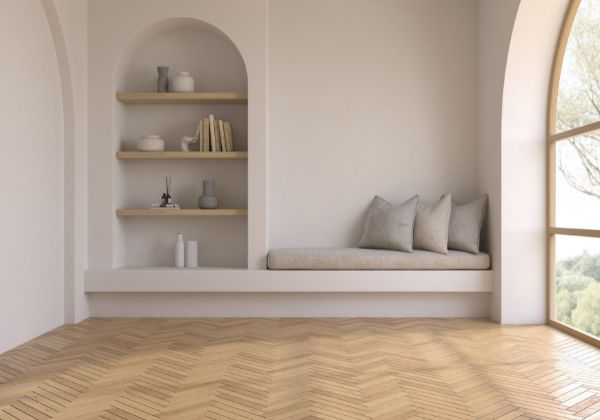
Japandi Style Idea #3 – Sumptuous textures
The best way to give your Japandi style the warmth and interest it needs is to use a range of textures and fabrics. People know the Japanese for their skill at making complicated patterns. Spend money on your dishes, blankets, curtains, and throws. Hygge can be made with the help of cozy textures and designs, which can add color to the room. This makes the style feel warm and welcoming instead of cold and far away. Rugs are the most crucial thing in the world. Find a big, soft, natural-material rug with a delicate pattern and put it next to your bed so you can step out of bed onto it as soon as you wake up. Throws made of a wool-blend fabric can be used to make your bed feel warm and cozy.
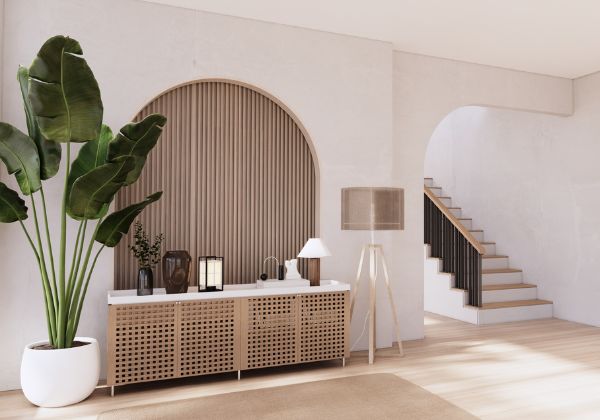
Japandi Style Idea #4 – Using low-key lighting
A room that is designed in a minimalist style looks best with lighting that is both simple and beautiful. Like any other item or piece of furniture, the lighting in your home should be carefully chosen with its function and its look in mind. The lights in your rooms should be turned down low to make a mood better for relaxing.
Adding industrial lighting to a dark color scheme inspired by Japanese culture could make it feel more Scandinavian. You could also add hand-made, retro pendants in colors like silver or copper to give the room contrast, warmth, and grace.
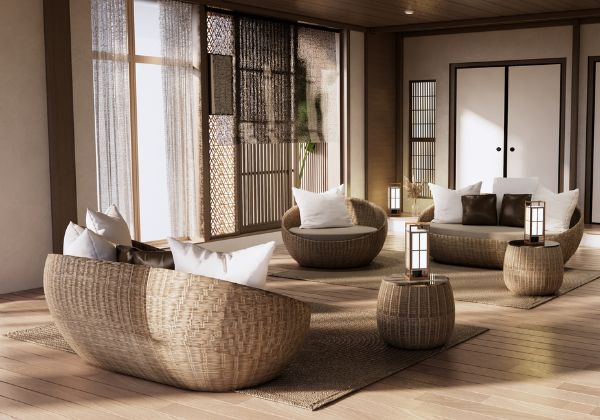
Japandi Style Idea #5 – Furniture
It is the most essential part of the Japandi style and is highly valued. Because of this, it should have a simple look with subtle colors. To make a difference, keep the decorations minimum and make the furniture stand out.
One thing that makes Japandi rooms stand out is low-profile furniture. People say being close to the ground makes them feel calm and peaceful. If you use low-profile furniture in your Japandi design, it will feel cozy and comfy.
The Japanese can get a lot of cedar (sugi), red pine (Akamatsu), and cypress (hinoki). On the other hand, the most popular types of wood used in Scandinavia are oak, mahogany, pine, and teak. You can use light and dark wood tones in the design of the inside of your Japan-style home by making a difference between the two. If the walls of your Japanese dining room are a putty color, you can make a visible difference by putting rich dark brown wood on the bottom shelves.
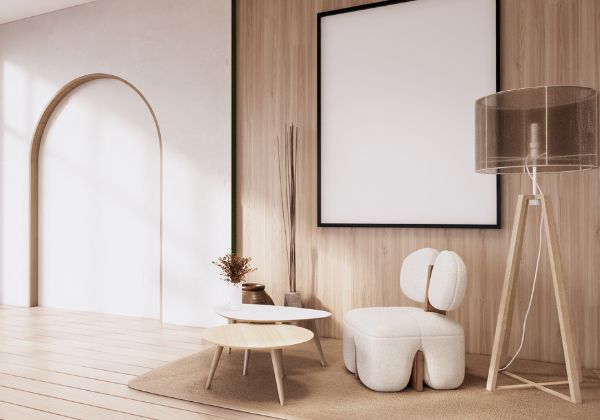
Japandi Style Idea #6 – Handicrafts
Both the furniture and the decorations depend on the work of craftspeople. Since each item is made by hand, it is one of a kind, and the two will sometimes be different. Clay, glass, wood, and stone are good choices for decorating this place. Some other examples of natural materials are ceramics, bowls, and enormous light fixtures made from natural materials. A soft, fuzzy rug is an excellent addition to the relaxed Scandinavian style because it makes the room feel cozier.
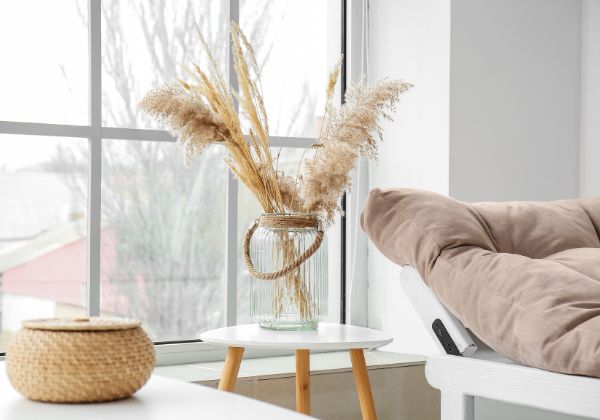
Japandi Style Idea #7 – Add texture to the wall
Bamboo or wood frames are often used to make the walls of traditional Japanese rooms. On the other hand, the feel of Japandi walls is much like that of bamboo or wood panels. It is a great way to add visual interest to a space with little else going on. If you want to make a wall more interesting architecturally, you can lay thin wood strips across it in a vertical pattern. Putting up wood-slatted walls is a DIY job that isn’t too hard and produces high-quality results. Another good thing about this material is that it absorbs sound. You can get the look of slatted flooring by joining wood strips individually or buying bamboo panels that have already been made.
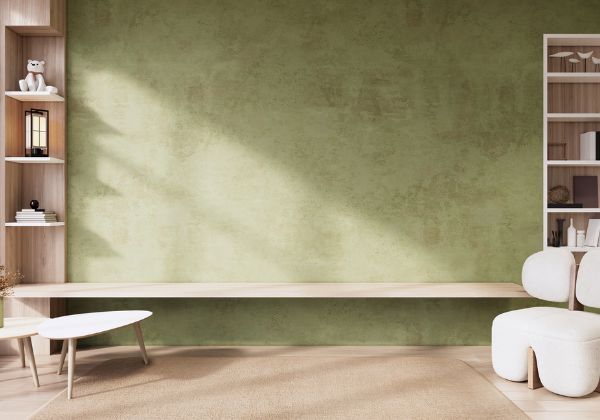
Japandi Style Idea #8 – Multipurpose and Functional
Scandinavians and Japanese put a lot of value on having functional furniture and decorations in their homes. On the other hand, one thing about the Japanese style that is often overlooked is its flexibility. For example, when Japanese beds are not used, they are often folded and put away. Also, rice paper screens can be moved around the house to define or separate different areas. The warm tables that are popular in Japanese homes are called kotatsu. These tables can be used for many things and are warm. Both furniture that folds up like origami and furniture that can also be used as storage can be used to decorate a Japanese-style home.
Japandi Style Ideas by HomeChromosome
Japandi style is like nothing else when it comes to making people feel calm and peaceful. When seeking inspiration for this style, you should look to nature for ideas and bring some of the outdoors into your home by using natural materials that are flexible and raw. The design takes the best parts of its two primary sources of inspiration, Japanese and Scandinavian, and blends them into a new style popular in a wide range of domestic settings. Contact HomeChromosome’s team of expert interior designers to get started on your Japandi style interior design project. You can view our portfolio here and follow us on Instagram here. Email us at info@homechromosome.com for a quick response.

